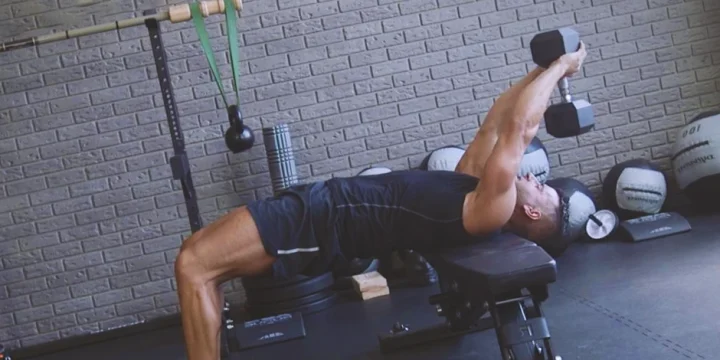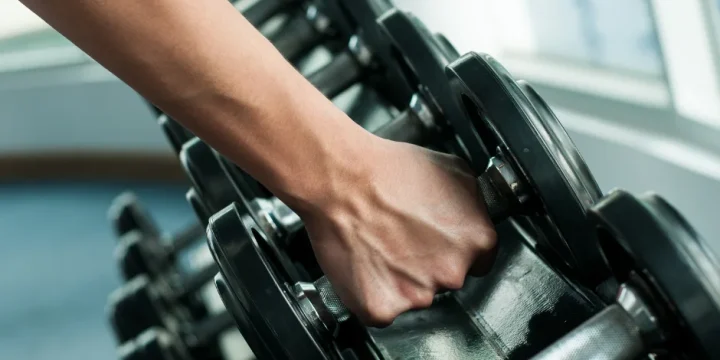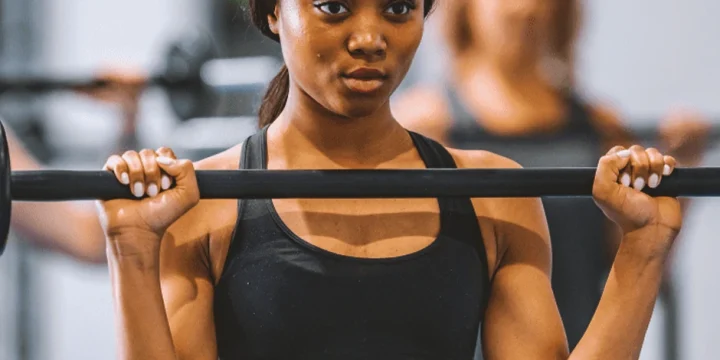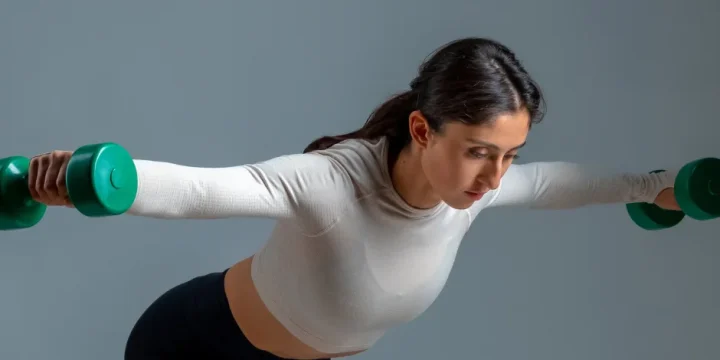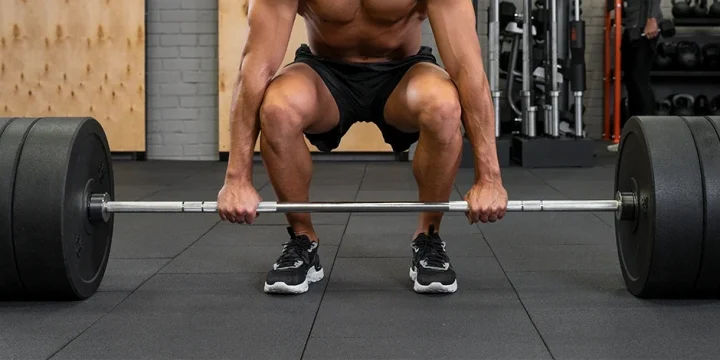As a fitness coach, I have developed a specialized leg day routine that caters to clients with a history of knee pain and those seeking to improve their balance and coordination.
One exercise consistently stands out within this carefully curated routine: the reverse lunge.
When performed correctly, this exercise offers many benefits compared to other lunge variations.
So, in collaboration with the team of fitness coaches at Total Shape, I have created this comprehensive handbook that delves into the intricacies of the reverse lunge.
Quick Summary
- The reverse lunge exercise is a beneficial variation, particularly for individuals with joint issues, but it can enhance athletic performance for anyone when performed correctly.
- Paying attention to proper form and avoiding common mistakes is crucial for optimizing the effectiveness of the reverse lunge.
- According to the Journal of Strength and Conditioning Research, reverse lunges provide unilateral training, address muscle imbalances, and promote symmetry.
- From my experience, reverse lunges are a game-changer for leg workouts, especially for those prioritizing knee safety and muscle symmetry.
How to Perform Reverse Lunge

Reverse lunges provide a valuable opportunity for individuals with knee issues to keep up with those who can perform lunges and squats without restrictions.
“If someone is rehabbing from an injury, such as an ACL injury, they’ll generally start with a reverse lunge before progressing to a forward lunge.”
- Doug Perkins, D.P.T.
But even if you don’t experience knee issues, when executed with deliberate control and precision, reverse lunges can surprisingly deliver unique advantages that traditional lunges may not provide.
But we’ll explore the reverse lung benefits shortly.
Firstly, let’s delve into the proper technique for performing reverse lunges:
- Start by standing upright with your feet shoulder-width apart and your hands on your hips or relaxed by your sides.
- Step backward with your right leg, landing on your foot’s ball and lifting your heel.
- Lower your body by bending both knees to create a 90-degree angle with your front and back legs. Ensure your left knee is directly above your ankle and your right knee hovers above the ground.
- Keep your torso upright and engage your core muscles for stability throughout the movement.
- Push through your left leg heel to return your rear foot to the starting position, returning to a standing position.
- Repeat the same steps with your opposite and alternate legs for the desired number of repetitions.
Learn More:
Tips & Common Mistakes
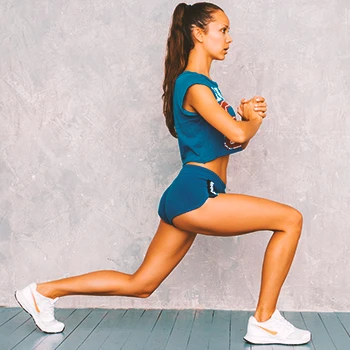
To help my clients grasp this exercise more easily, I always give them a few reverse lunge form tips to keep in mind.
Here are the most important ones for proper technique:
- Keep both feet pointing straight ahead, with the front foot planted firmly and the heel down.
- Push the knee outward for alignment.
- Maintain a few inches of distance between the back knee and the ground.
- Avoid stepping too far back.
- Consider suitable footwear for stability.
- Control the movement.
- Opt for a wider base to reduce stress on the hip joint.
- Aim for a lunge stance that is shoulder-width apart, adjusting as needed for pelvic structure.
- Shift weight onto the front leg to engage the glutes.
- Use the rear leg as a “supporting leg.”
Benefits

Based on my observations with various clients, I can attest to the wide-ranging benefits of reverse lunges.
The benefits include:
- Eliminates Imbalances. According to the Journal of Strength and Conditioning Research, reverse lunges provide unilateral training, addressing muscle imbalances and promoting symmetry [1].
- Easier to Perform. The reverse lunge is considered easier and ideal for beginners, allowing focus on muscle engagement and stability while controlling the eccentric movement. They are also adaptable for various fitness levels including beginners and advanced lifters.
- Glute Activation and Knee-Friendly. Reverse lunges teach proper hip hinging, activate the glutes, and are gentle on the knees, making them suitable for individuals with knee issues.
- Improves Balance and Coordination. This exercise enhances balance, coordination, and motor abilities, benefiting athletes and individuals with poor motor control.
- Sprinting Movement. The reverse lunge variation mimics the explosive sprinting movement, contributing to athletic performance.
Muscles Worked
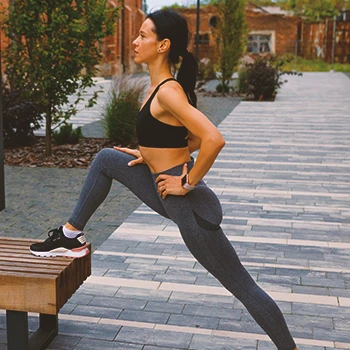
The reverse lunge is a versatile exercise that effectively engages muscles in the entire leg.
However, while it primarily targets the lower-body muscles, it can also contribute to upper-body strength and development.
The exercise hits the following muscles:
- Quadriceps
- Hamstrings
- Glutes
- Adductors
- Abductors
- Core
Variations and Alternatives
Working with clients who have healthy knees, I've explored various reverse lunge variations and alternatives to keep their routines engaging and challenging.
When equipment is not available, you can try out body weight variations like:
- Curtsy lunge
- Clock lunge
- Jump lunge
If you have access to equipment, you can modify the exercise by performing the barbell reverse lunge or Zercher reverse lunge.
If you find the reverse lunge too easy or boring, there are alternative exercises that engage similar muscles, like a walking lunge with a pair of dumbbells, a unilateral leg press, or Bulgarian split squats.
FAQs
How Many Reverse Lunges Should I Do?
You should do 2–3 sets of 10–15 repetitions of reverse lunges per leg if you are new to this exercise. As you progress, it’s important to adjust your sets and reps based on your ability to maintain proper technique throughout the entire movement.
Are Reverse Lunges Better Than Split Squats?
Reverse lunges are better than split squats for improving balance and stability. On the other hand, split squats are better exercises for building power and strength.
References:
- https://journals.lww.com/nsca-jscr/fulltext/2016/02000/unilateral_vs__bilateral_squat_training_for.12.aspx
About The Author
You May Also Like
